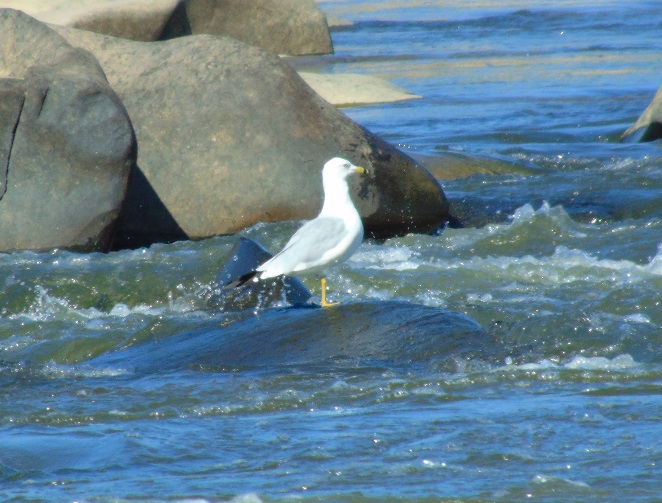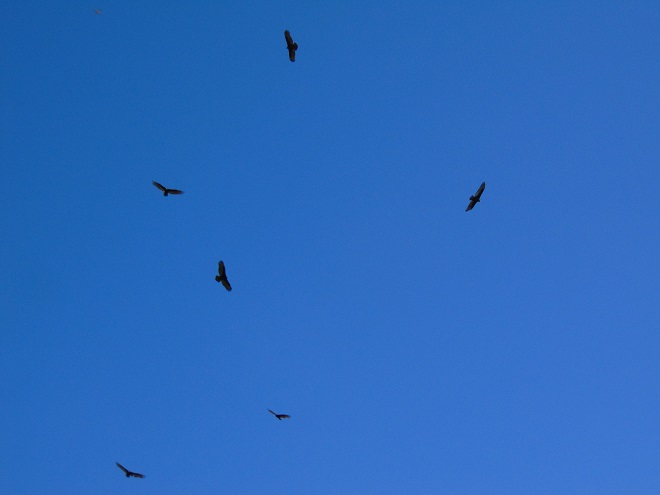A Baltimore Oriole (Icterus galbula) glowed in the first sunlight of the day as it began illuminating the treetops. I’m not certain of the cause, but I often have the urge to dig into a bowl of orange sherbet after seeing one these magnificent blackbirds. That’s right, in the Americas, orioles and blackbirds are members of the same family, Icteridae. Look at blackbirds more carefully, you might see the resemblance.
Sunshine at dawn and migrating warblers were again active in the foliage. Eight species were identified today. Off to the tropics they go. To the land of palm and citrus, yes citrus…limes, lemons, grapefruits, and oranges.
The Ruby-throated Hummingbirds (Archilochus colubris) are on the way toward the gulf states, then on to Central and South America. Five dashed by the rocky lookout in the falls this morning. Remember, keep your feeders clean, wash and rinse all the parts, and refill them with a fresh batch of “nectar”, four or five parts water to one part sugar. Repeating this process daily during hot weather should keep contamination from overtaking your feeder. It’s not a bad idea to rotate two feeders. Have one cleaned, rinsed, and air drying while the second is filled and in use at your feeding station, then just swap them around. Your equipment will be just as clean as it is at the sanitary dairy…you know, where they make sherbet.
The first of the season Caspian Terns (Hydroprogne caspia), giant freshwater versions of the terns you see at the seashore, passed through the falls late this morning. Their bills are blood-red, not orange like the more familiar terns on the coast. They’re stunning.
Ring-billed Gulls (Larus delawarensis) have been at the falls for several weeks. Total numbers and the composition of the age groups in the flock change over the days, so birds appear to be trickling through and are then replaced by others coming south. The big push of southbound migrants for this and many other species that winter locally in the Mid-Atlantic region and in the southern United States is still more than a month away. There are still plenty more birds to come after the hours of daylight are reduced and the temperatures take a dip.


Some migrating butterflies were counted today. Cloudless Sulphurs, more of a vagrant than a migrant, and, of course, Monarchs. I’ll bet you know the Monarch, it’s black and orange. How can you miss them, colored orange.
That’s it, that’s all for now, I bid you adieu…I’m going to have a dip of orange sherbet, or two.

